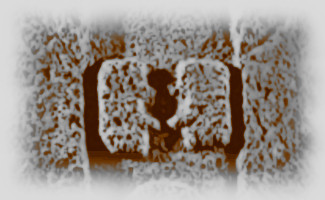
Explanation of the signs of Pillar 18
First,
it is very interesting that many of the symbols are related to the
Rigveda. And I say this though I’m not a Hindu and though I have no
connection to India.
It is for instance speculated that
the “Twins”, “Aśvín”, are a symbol for Mercury and Venus.

In the Rigveda 2.39.3, they are for example compared to the ruddy shelduck, “Chakrâvaka”, about which it is said that male and female can meet during the day, but not during the night, while Mercury and Venus cannot be seen at night. There are more descriptions in the Rigveda of the “Aśvín” which can be understood astronomically(1.139.4, 1.180.2 and 8.9.12). Unfortunately however, the Rigveda is very complicate. And this alone is therefore not enough to understand these pillars.
Now this is Pillar 18, the pillar with the “Twins”:
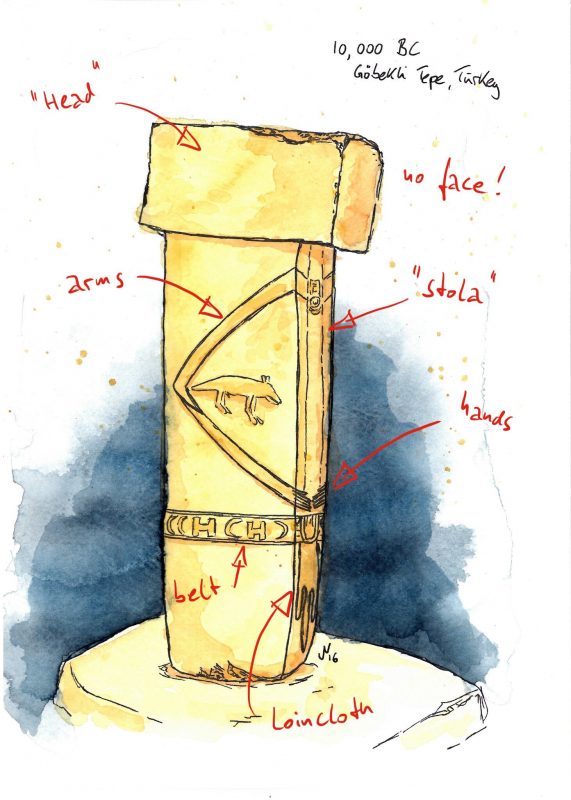
Let’s have a look at the “Belt” on the side. We notice a “C” on the very left, another “C”, an “H”, a “C”, another “H” and an inverted “C”. As mentioned before, for me the “H” is the “Twins”.
A “conjunction” is when Earth, Mercury OR Venus and the Sun are “on one line”. From Earth, Mercury and Venus, at the start of the inferior conjunction, one first does not see Mercury or Venus (below, an EXAMPLE FOR VENUS, “Erde” is obviously “Earth”, as you can also notice by using the tool “Stellarium”, it is very difficult to see Venus on this day, as it is constantly close to sunshine, including in the morning and in the evening). Therefore, at first only a “C”, for the Sun. You will read more about the “C” and its relation to the Sun, later.
Then, (for Venus about 48 days later to about 243 days later) one starts to see Mercury and Venus, in the morning, on the right of the Sun, don't forget that Earth is “turning“ during the day from right to left. One should also know, that these planets are orbiting faster than Earth, therefore after the inferior conjunction they start to be seen “on the right“, “in the morning“. Hence, on the “Belt”, one then has a “C” and an “H”.
Afterwards there is the superior conjunction, once again one does not see Mercury or Venus (the Sun, obviously much larger than depicted here, is then hiding much smaller Mercury and Venus). Therefore, on the “Belt” then again only a “C”.
Finally one has Mercury or Venus on the other side of the Sun, in the evening. Therefore, now on the “Belt” an “H” on the left of an inverted “C”. And the result of all this on the “Belt” is “C CH C HC”, with the last “C” inverted.
Interesting, above this “Belt” is this “Fox” or “Wolf”.
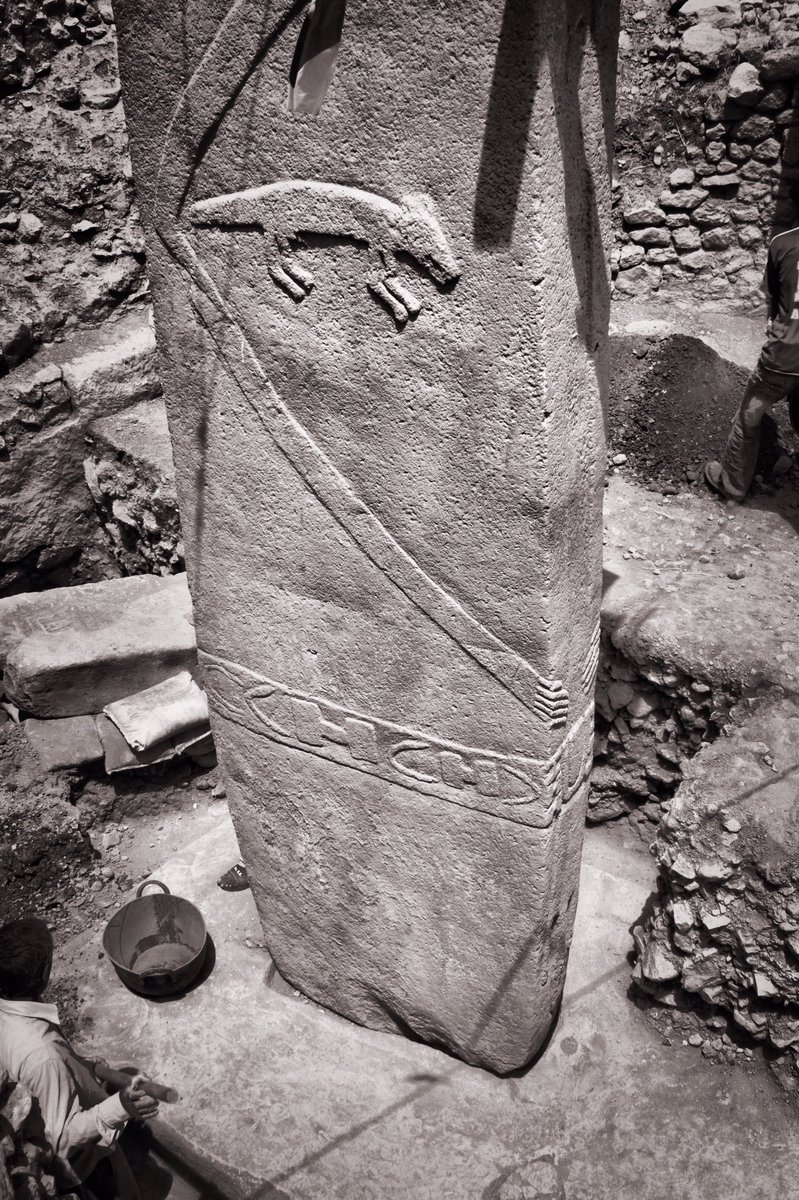
If it is a “Wolf”, one has to know that the Rigveda relates it to the Moon. More precisely “a ruddy wolf beheld me once, as I was faring on my path…”, Rigveda 1.105.18, also “vṛka” in ancient Vedic Sanskrit can be considered a shortened form for Moon. While there is a red wolf. But this red wolf is only existing in North America. So was this a code for the Moon? In any case the Moon rises in the East. And this “Arm” about the “Belt” has the shape of a “C”. Was this to indicate that in the beginning, after the inferior conjunction, Mercury and Venus are rising in the East like the Moon?
Now let’s have a look at the front of this pillar.
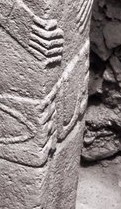
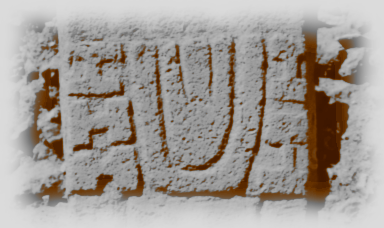
This time, from another perspective, we will see Mercury and Venus together, while on the “Belt” on the side one considers them separated. And at first “one is beyond the other”, Venus closer to Earth as Mercury. Therefore, the “H”, bottom-right, is “turned”.
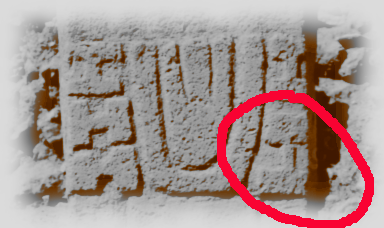
Mercury
|
|
|
|
|
Venus
EARTH
Later, once Mercury is on the other side of the Sun, they are viewed as a “horizontal line”. And the “H”, bottom-left, is no longer “turned”. So this on the front of the Pillar 18 is the same as on the side of this pillar, but from another perspective.
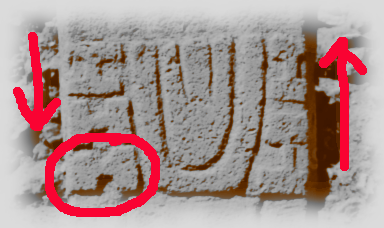
Mercury ----- Venus
EARTH
On the bottom of pillar 18 one has seven birds. And the question is of course, whether this is the “Chakrâvaka”. By the way, I read that in the Rigveda the “Aśvín” are compared to the Paṅkti meter, which is octosyllabic with five lines. While there are eight conjunctions of Venus in five years and eight conjunctions of Mercury in respect to Venus in about five “Venus Years”. In general, the Rigveda seems to be full of descriptions of conjunctions and other astronomical movements, in very consistent ways. Interestingly, because of described solar eclipses and other astronomical events, at least parts of the Rigveda seem to be much older than is consensus now. Furthermore, as far as I could understand it, the Mitanni-documents are not written in Vedic Sanskrit but rather in a language somewhat similar to younger Avestan, this alone in my opinion raises doubts about how the Rigveda is currently dated. And I want to repeat, I notice this though I’m not a Hindu and though I have no connection to India. While even if one understands some astronomical relations, even though they seem to be correct and consistent, because of numerous “puns” and allusions, in ancient Vedic Sanskrit, the Rigveda remains very difficult to read.
I think the other pillars are also astronomical descriptions. That it is especially about conjunctions in order to be able to rectify the Moon-calender, which is not having 365 days in a year. By the way, the Mayans had similar calculations. Unfortunately, some pictures are bad. Some pillars in Göbekli Tepe are not yet fully unearthed, others are damaged. One therefore still can only speculate, as I said before, every sign seems to have a meaning. And one “H” more or less can change a lot.
References
Pictures and graphics are from the German Archaeological Institute or have been created with the tools “Stellarium” and “Kstars” or have been created and drawn by me.